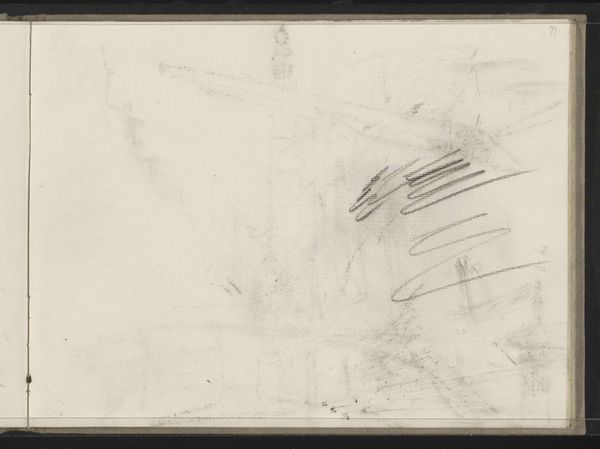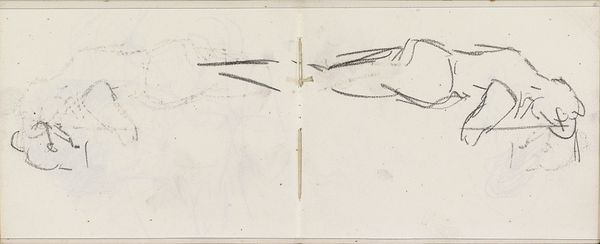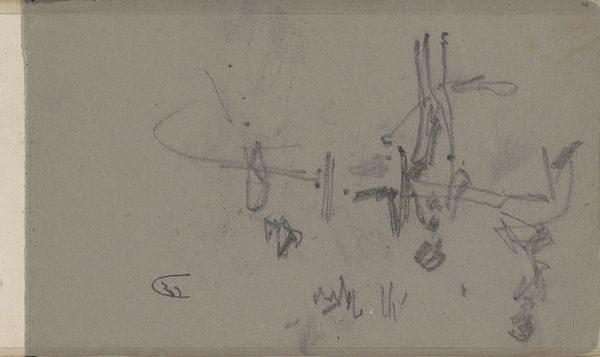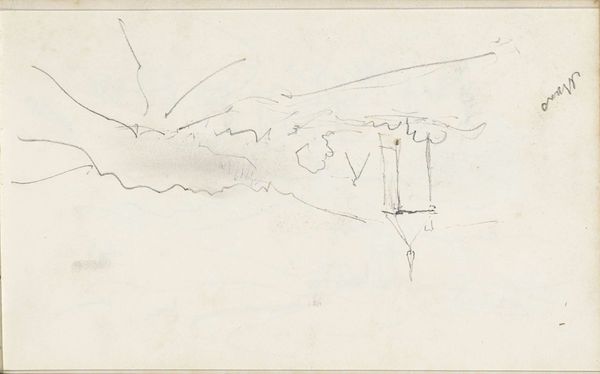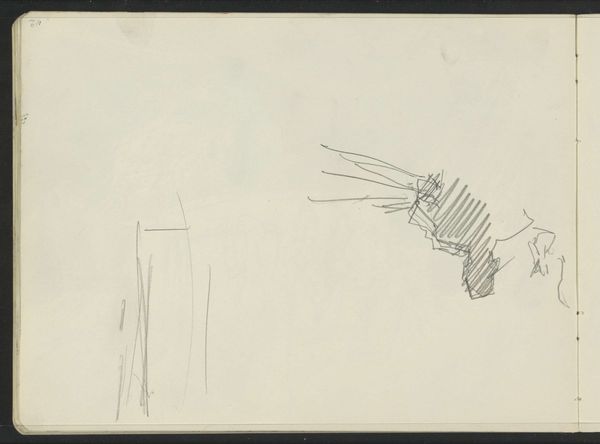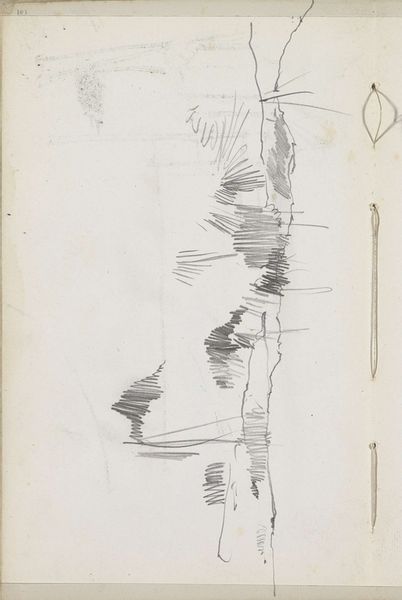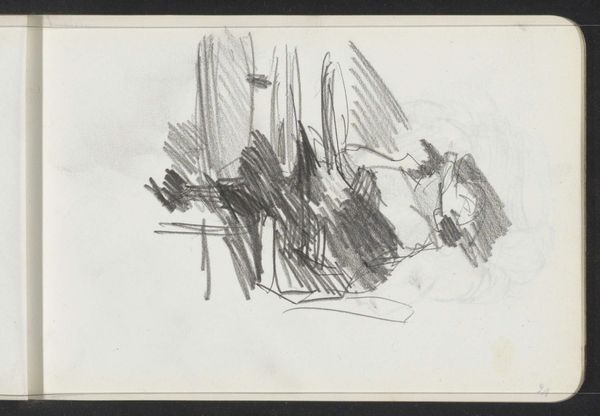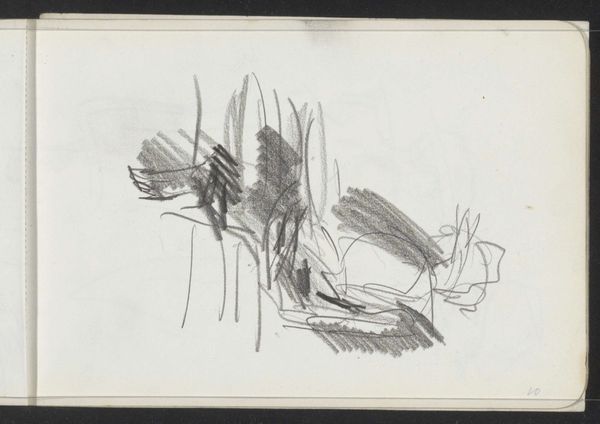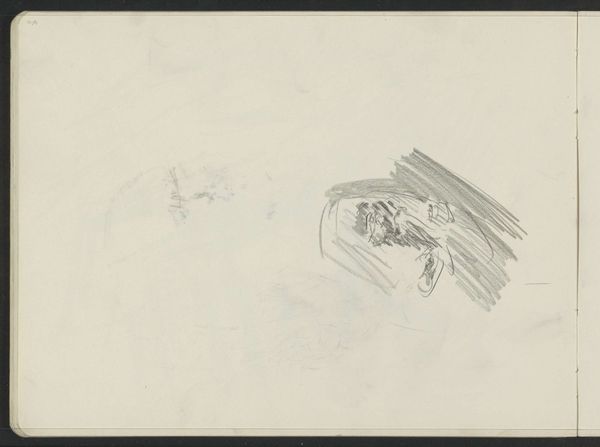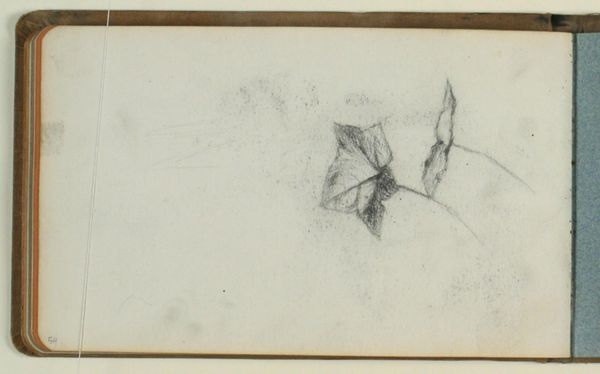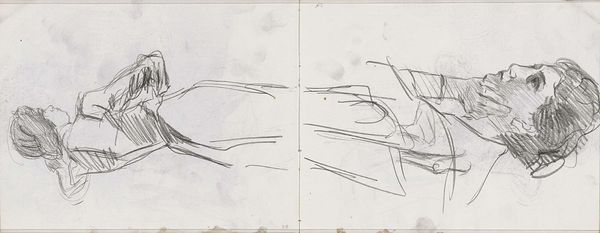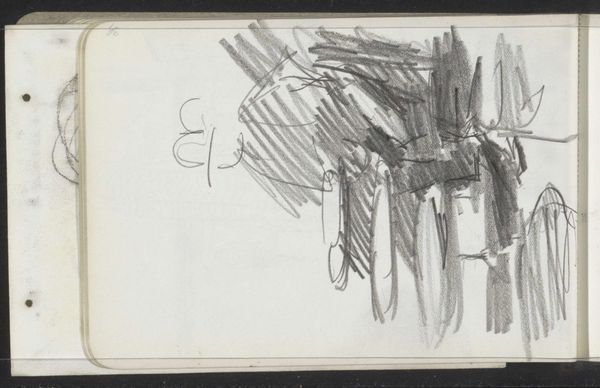
Copyright: Rijks Museum: Open Domain
Curator: Isaac Israels created this intriguing drawing, “Figuur op straat”, sometime between 1875 and 1934. It's currently held in the Rijksmuseum collection. Editor: Well, it certainly leaves a stark impression! The contrast between the heavy shading and the almost absent figure is striking, a dance of form and void. Curator: Exactly. Let’s delve into the compositional elements. The interplay of lines, specifically the swiftness of line versus more built up tonal variation, gives a fleeting quality that echoes impressionism. Note how this dynamism impacts meaning making, giving this street scene a real sense of ephemerality. Editor: True. Looking closely at the materials though, you can almost feel the grain of the paper beneath the pencil strokes. I am most compelled by the almost harsh and seemingly spontaneous application of graphite – this drawing feels as though it might have captured a very quick observation, an initial attempt. Do you think there's an indication of the broader studio practice or sketching style embedded here? Curator: A fascinating question. One could argue that the lack of finish is part of its aesthetic strategy. Perhaps we should not be too consumed by a finished 'look' and embrace it as study piece? The unburdened line suggests Israels's engagement with speed, as much as the object. I see a visual metaphor for fleeting modernity, rather than negligence. Editor: I’m taken by the idea of linking immediacy and intention within its method of construction; yet I wonder about how the materials here act to record a physical process, too. Do the physical limitations of pencil and paper somehow feed the way that figures like these became popularized? The means by which these figures were circulated in society—think of mass print—impacts its themes, too. Curator: Food for thought! Ultimately, Israels gives us more than just a figure; he shows us the power of lines. Its unfinished quality actually allows us to engage, even imagine that figure existing between the lines themselves. Editor: I agree. The artifice of the artist and his labor are not always intended to be revealed, but even if seemingly incomplete, there is value in these modes. Curator: Indeed, there's an openness, an invitation to complete the narrative that transcends even stylistic interpretations. Editor: Yes. In the end, it’s a study on modern ways of living, where everything exists as sketches, never a finalized rendering.
Comments
No comments
Be the first to comment and join the conversation on the ultimate creative platform.
